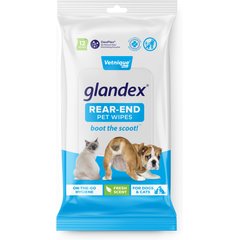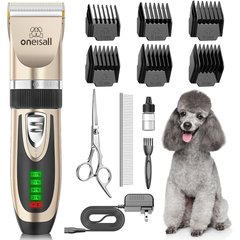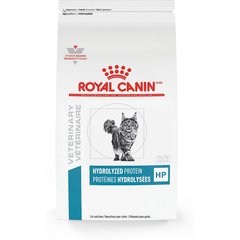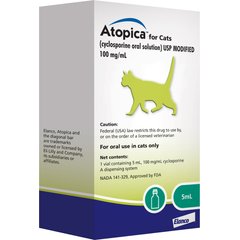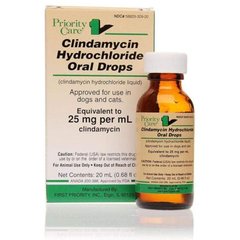Cat Dragging Butt? 6 Common Causes and How To Stop Your Cat’s Scooting
ZeynepKaya/iStock / Getty Images Plus via Getty Images
If you’ve seen your cat dragging their butt on the floor and are concerned what this behavior might mean, you’re in the right place.
While not all causes of cat scooting are concerning, this behavior can indicate a health problem, especially if it’s happening frequently.
Key Takeaways
- Cat scooting is common, though not as common as scooting is in dogs.
- Treatment for cat scooting depends on the underlying cause.
- Keeping your cat on parasite prevention and bringing them for annual wellness exams can help prevent scooting.
What Is Cat Scooting?
If you’ve ever seen a dog scoot, cat scooting looks very similar.
Your cat will plop on their bottom, extend their back legs straight out in front of them, and use their front legs to drag their bottom across the floor.
Cat scooting doesn’t usually require emergency attention.
Depending on why your cat is scooting, you might also notice them licking their bottom excessively.
Cat scooting is common, though not as common as scooting is in dogs.
6 Common Causes of a Cat Scooting
Let’s take a look at six common reasons for cat scooting.
1. Something Is Stuck On or In Their Bottom
One of the most common reasons a cat will drag their bottom is if something is stuck in their anal region.
Most often, this is a piece of poop, or fecal matter, that’s stuck to the fur around the bottom. Another common reason is if a piece of poop is hanging from the anus by hair that your cat ingested.
In these cases, you can grab a tissue or some toilet paper and remove the offending object.
If you see something other than poop or a small bit of hair clinging back there, do not pull on it.
You should never pull on a string hanging from the anus, as it can cause serious injury to the intestines. If a foreign object is hanging from the anus, this is considered an emergency.
2. Tapeworms
You might be able to see tapeworm segments around your cat’s anus. These can cause varying levels of itchiness.
Your cat might drag their bottom to relieve the itch.
3. Itchy Skin or Allergies
Your cat can’t scratch their anal region with their claws, so if they have an itchy bottom, they might drag it on the ground.
Allergic skin disease is one of the most common causes of itchy skin in cats.
Common offending allergens include fleas, environmental allergens (like pollens or dust mites), and food allergens (like chicken or fish).
4. Anal Gland Issues
Like dogs, cats have an anal sac on each side of their anus.
In cats, the glands are at roughly the 5 o’clock and 7 o’clock positions around the anus.
If the anal sac doesn’t empty appropriately, gets infected, or grows a mass (which is less common in cats than in dogs), your cat might drag their bottom.
You might also notice a fishy odor.
5. A Mass or Growth in the Anal Region
A mass or growth in the anal region can cause a cat to drag their bottom, as it might feel like something is stuck back there.
This can range from a benign little wartlike growth to a malignant cancer, such as an anal sac cancer.
6. Rectal Prolapse
A rectal prolapse occurs when a small part of the rectum falls out of the anus.
It will look like a pink mass protruding from the anus. This is more common in kittens than in adult cats, particularly in kittens experiencing diarrhea.
Is Cat Scooting an Emergency?
Cat scooting doesn’t usually require emergency attention.
An exception to this rule would be if you see something hanging out of your cat’s bottom other than feces, such as a string or part of the rectum. Another exception is if your cat is vocalizing in the litter box, indicating that they’re struggling to go to the bathroom.
If you can’t see an obvious issue for scooting, like fecal matter stuck to the fur, consult with a veterinarian.
If the cat has a string partway out of their bottom, you should never pull the string. Linear foreign bodies like strings can cause the intestines to fold up like an accordion, potentially lacerating the intestines and leading to life-threatening sepsis.
A rectal prolapse is also considered an emergency and should be treated immediately.
Vocalizing in the litter box could be a sign of severe constipation, urinary blockage, or pain when eliminating.
Seek urgent veterinary attention for your cat to rule out potential emergencies, like a urinary blockage.
When To Call Your Vet
Call your veterinarian if you notice any of the following:
-
Your cat is scooting multiple times per day or several times a week.
-
Your cat’s bottom is red around their anal region.
-
Your cat has swelling or a mass or growth in the anal region.
-
Your cat is bleeding from the anal region.
-
You notice a frequent fishy odor coming from your cat.
-
You find white rice-like tapeworms around your cat’s bottom or in your cat’s bedding.
How Veterinarians Diagnose Cat Scooting
Your veterinarian will first perform a physical examination that includes looking at your pet’s anal region for any obvious causes of butt scooting.
They might perform a rectal exam to palpate the anal sacs.
Your vet might also look at a sample of your cat’s feces to see whether they can identify tapeworm segments.
If your veterinarian suspects allergies, they might discuss dietary trials to rule out food allergies, or they might suggest having a veterinary dermatologist test for environmental allergies using a skin-prick test.
If a mass is noted, your vet might recommend taking a biopsy of the mass to diagnose what type of growth is present.
Treatment of Cat Scooting
Treatment for cat scooting depends on the underlying cause.
For a long-haired cat who keeps getting fecal matter stuck in their fur, it might be as simple as trimming the hairs under your kitty’s tail.
You can gently clean the area using warm water, a rag, and pet-safe shampoos or wipes.
Tapeworms are treated with a parasite-killing agent called praziquantel. This might be an oral medication, a shot, or a topical agent.
For cats with allergies, treatment might include:
-
A prescription allergy diet, such as Royal Canin® Hydrolyzed Protein cat food
-
Allergy medications, such as Atopica® (cyclosporine)
-
Allergy shots formulated by a veterinary dermatologist
-
Flea prevention and treatment, such as Revolution® Plus
Some anal gland issues might require surgery, while others can be treated with antibiotics like clindamycin.
Masses will require surgery to remove.
A rectal prolapse will require surgery to replace the rectal tissue within the anus or to remove the tissue if it has become severely damaged.
Prevention of Cat Scooting
You can prevent cat scooting by:
-
Keeping up on grooming—This includes cleaning your cat’s behind when necessary and monitoring the fur back there.
-
This is especially important for long-haired cats, who can get items stuck in the fur around their anal region and who develop mats in their fur.
-
Obese cats might also have difficulty reaching their backside to clean it.
-
-
Maintaining a healthy weight for your cat—Cats who are obese often have difficulty reaching their back end to groom. Consult with your veterinarian to make sure your cat is at a healthy weight and develop a weight-loss plan if necessary.
-
Placing foreign objects out of reach—Make sure to keep foreign objects, especially strings and threads, safely away from your cat.
-
Keeping your cat on parasite prevention—The fleas and the tapeworms these parasites transmit can cause anal itching that leads to scooting.
-
Seeing your veterinarian for wellness exams—Your veterinarian might be able to detect issues, such as a mass near the anus, before they become significant issues for your pet.
Cat Scooting FAQs
Why is my cat scooting?
Your cat’s scooting generally comes down to one of three things: Itchiness, pain, or the feeling that something is stuck.
If you can’t see an obvious issue for scooting, like fecal matter stuck to the fur, consult with a veterinarian.
What can I give my cat for scooting?
If your cat is scooting regularly, it’s important to consult with a veterinarian.
Some causes can be managed easily with oral medications or wipes for the bottom, but other causes are more serious and require surgery.


